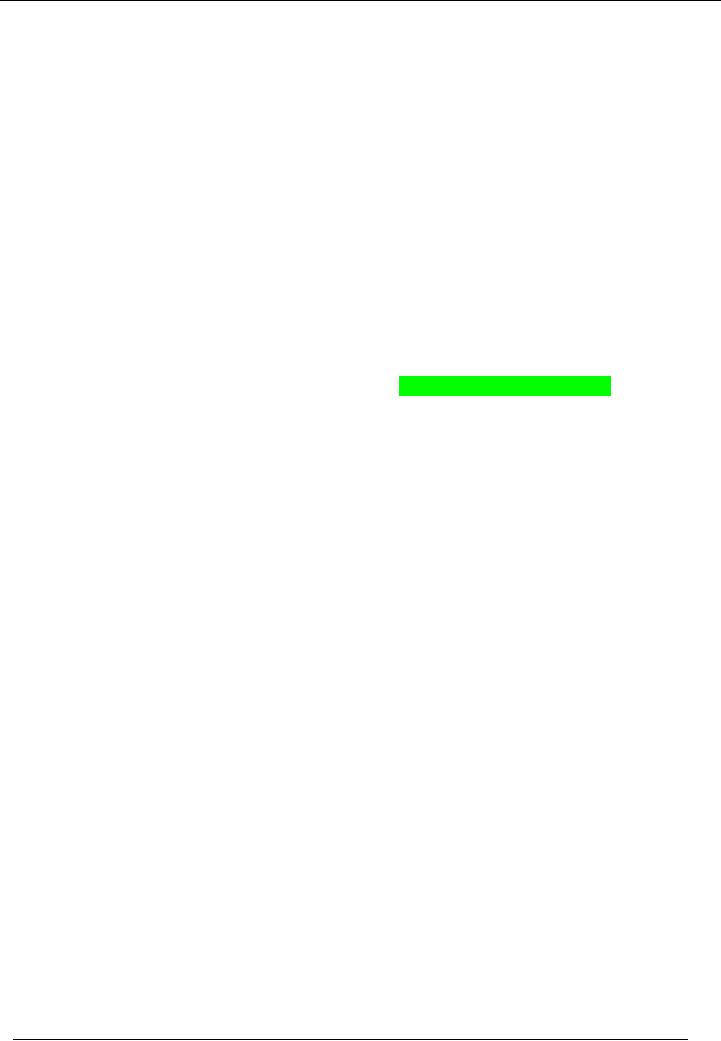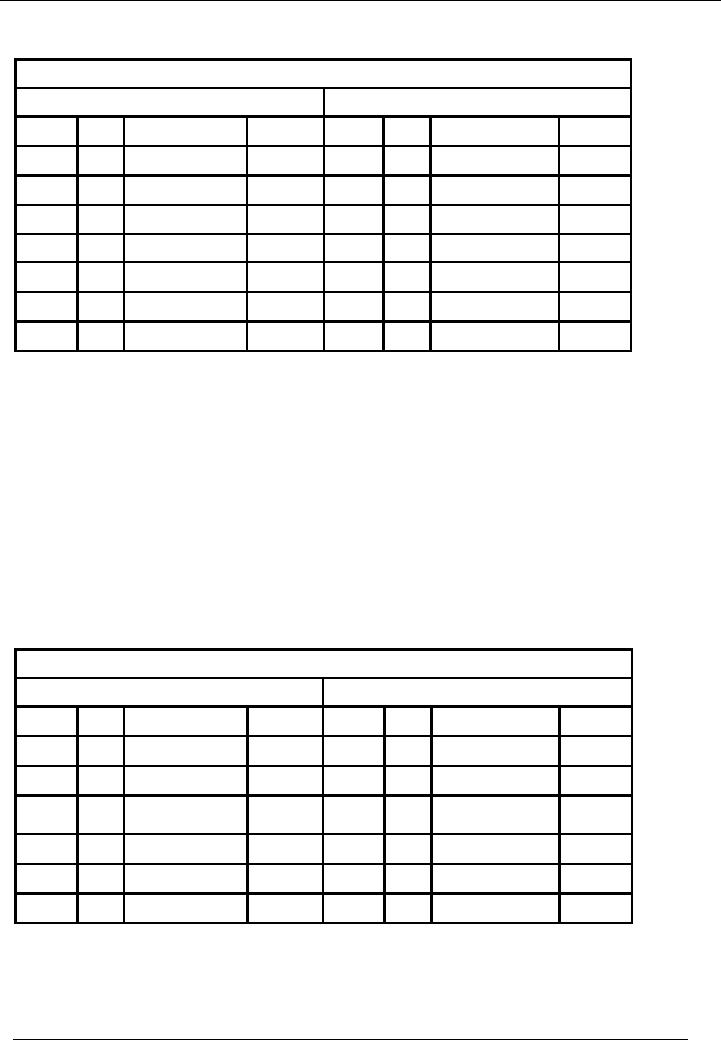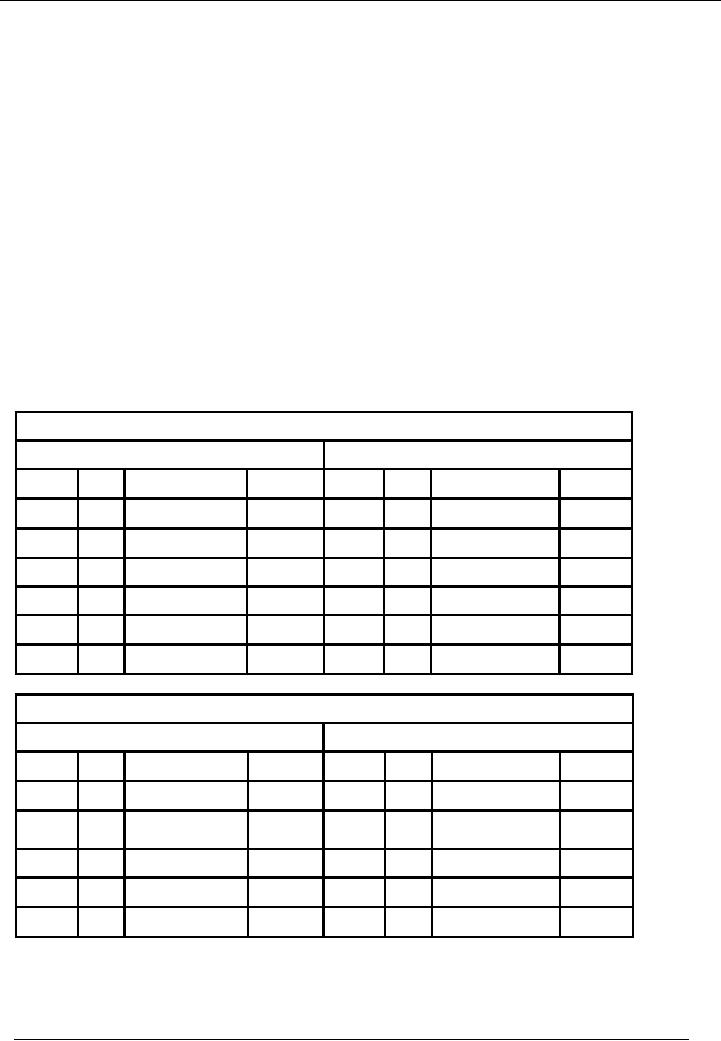 |
A PERSON IS BOTH DEBTOR AND CREDITOR |
| << SUBSIDIARY BOOKS |
| RECTIFICATION OF ERROR >> |

Financial
Accounting (Mgt-101)
VU
Lesson-27
A
PERSON IS BOTH DEBTOR AND
CREDITOR
This
happens so many times in
business that a person is
both your debtor and
creditor. This means that
you
are
purchasing one thing from
him. So, you have to
pay him against that
purchase and at the same time
you
are
selling him another thing
for which he has to pay you.
For example, you purchase
item X from Mr. A for
Rs.
50,000 and sell him item Y
for Rs. 25,000. Now,
one way of settling the payable
and receivable is
that
you
can pay Mr. X 50,000
and ask him to pay
you Rs. 25,000. The
other and may be the wiser
method is that
you
pay him Rs. 25,000
and both transactions are
settled. This is how such
transactions are handled in
real
life.
JOURNAL
ENTRIES
·
Normally
where no control accounts
are maintained, following entries
will be recorded:
Debit:
A (payable/creditor) account
25,000
Credit:
A
(receivable/debtor) account
25,000
This
will bring down the balance
of A (receivable/debtor) account to 0 and
that of A
o
(payable/creditor)
account to 25,000. The other
entry will be:
Debit:
A (payable/creditor) account
25,000
Credit:
Cash /
Bank
25,000
This
will settle the payable
account fully.
o
·
Where
control accounts are being maintained the
above two entries are
still recorded but with
slight
modification:
Debit:
Creditors Control account
25,000
Credit:
Debtors
Control account
25,000
·
At the
same time A's account in Creditor's
ledger is debited with 25,000
and Credited in
Debtors'
ledger with the same
amount.
Debit:
A (payable/creditor) account
25,000
Credit:
Cash /
Bank
25,000
·
This
entry comes from the creditor's column of
cash / bank book payment
side as usual.
BAD
DEBTS
Provision
does not affect debtors
account in simple books. It will,
therefore, have no effect either on
debtor
control
account or debtors
ledger.
At the time of
actual bad debt, the journal
entry
Debit
Provision
/ Bad Debts
Credit
Individual
Debtors Account
If
control account system is in
operation, the debit entry
will be same but the credit effect
will go to Debtors
control
account with a credit effect to
Individual Debtors Account in
Debtors Ledger.
Similar
treatment is given to discounts received
and allowed.
184

Financial
Accounting (Mgt-101)
VU
RECORDING
OF BAD DEBTS IN CONTROL
ACCOUNTS
To
record bad debts in control
accounts, following entries
are recorded:
· In
case no provision was
created for doubtful
debts:
Debit:
Bad
Debts
Credit:
Debtors
Control Account
·
In
case provision was created
for doubtful debts:
Debit:
Provision
for Doubtful Debts
Credit:
Debtors
Control Account
Recording
is also made in the respective
accounts of the debtor in subsidiary
ledger.
RECORDING
OF DISCOUNTS RECEIVED IN CONTROL
ACCOUNTS
To
record discount received in control
accounts, following entry is
recorded:
Debit:
Creditors
Control Account
Credit:
Discount
Received Account
Recording
is also made in respective
accounts of the creditors in subsidiary
ledger.
RECORDING
OF DISCOUNTS ALLOWED IN CONTROL
ACCOUNTS
To
record discount allowed in control
accounts, following entry is
recorded:
Debit:
Discount
Allowed Account
Credit:
Debtors
Control Account
Recording
is also made in the respective
account of the debtors in subsidiary
ledger.
ILLUSTRATION
# 1
Following
information is given from the books of
Mr. A(Debtor) for the month
of June, 2002. You
are
required to
prepare Debtors Control
Account and work out the
closing balance of debtors
control account
of Mr.
A.
Opening
Balance Dr.
85,500
Transactions
during the month:
Sales
for the month
90,000
Sales
return for the month
2,500
Payments
received
140,000
Discount
allowed
5,000
Bad
debts written off
4,000
185

Financial
Accounting (Mgt-101)
VU
SOLUTION
Debtors
Control Account
Debit
Side
Credit
Side
Date
No.
Narration
Dr.
Rs.
Date
No.
Narration
Cr.
Rs.
Jun
01
Bal
B/F
85,500
Jun
Returns
2,500
Jun
Sales
90,000
Jun
Receipts
140,000
Jun
Discount
allowed
5,000
Bad
Debts
4,000
Jun
31
Bal
C/F
24,000
Total
175,500
Total
175,500
ILLUSTRATION
# 2
Following
information is given from the books of
Mr. B(Creditor) for the
month of June, 2002. You
are
required to
prepare Creditors Control Account
and work out the closing
balance of Creditors control
account
of Mr. B.
Opening
Balance
Cr.
65,000
Transactions
during the month:
Purchases
for the month
70,000
Purchases
return for the month
5,000
Payments
made
90,000
Discount
received
3,000
SOLUTION
Creditors
Control Account
Debit
Side
Credit
Side
Date
No.
Narration
Dr.
Rs.
Date
No.
Narration
Cr.
Rs.
Jun
Returns
5,000
Jun 01
Bal
B/F
65,000
Jun
Payments
90,000
Jun
Total
purchases
70,000
Jun
Discounts
3,000
received
Jun
31
Bal
C/F
37,000
Total
135,000
Total
135,000
ILLUSTRATION
# 3
186

Financial
Accounting (Mgt-101)
VU
The
financial year of Atif Brothers is closed
on June 30, 2002. You
are required to prepare Debtors
control
account
and Creditor control account
from the data given below:
Opening
balance
Debtors
150,000
Creditors
250,000
Sales
Cash
Note
1
180,000
Credit
260,000
Purchases
Cash
Note
1
120,000
Credit
200,000
Total
receipts
Note
2
350,000
Total
payments
Note
2
250,000
Discount
allowed
15,000
Discount
received
10,000
Bad
debts written off
25,000
Increase
in provision for doubtful
debts
Note
3
5,000
SOLUTION
Debtors
Control Account
Debit
Side
Credit
Side
Date
No.
Narration
Dr.
Rs.
Date
No.
Narration
Cr.
Rs.
Jun
01
Bal
B/F
150,000
Jun
Receipts(N2)
170,000
Jun
Sales(N1)
260,000
Jun
Discount
allowed
15,000
Bad
Debts
25,000
Jun
31
Bal
C/F
200,000
Total
410,000
Total
410,000
Creditors
Control Account
Debit
Side
Credit
Side
Date
No.
Narration
Dr.
Rs.
Date
No.
Narration
Cr.
Rs.
Jun
Payments
130,000
Jun 01
Bal
B/F
250,000
Jun
Discounts
10,000
Jun
Total
purchases
200,000
received
Jun
31
Bal
C/F
310,000
Total
450,000
Total
450,000
Notes to
the accounts
187

Financial
Accounting (Mgt-101)
VU
1.
In
control accounts, only cash
sales/purchases are dealt
with. Credit sales/purchases
are not
included in
control accounts,
2.
Receipts/Payments
include both cash and credit
receipts/payments. So, we enter the
figures in
control
accounts, after deducting cash
sales/purchases from total
receipts/payments. i. e.
Receipts
= 350,000 180,000 =
170,000
Payments
= 250,000 120,000 =
130,000
3.
Provision for doubtful debts
has no effect on control accounts.
So, any change in provision
will not
affect
actual bad debts.
BENEFITS
OF SUBSIDIARY LEDGERS
·
Subsidiary
ledgers contain the record of all
individuals Debtors and
Creditors.
·
Subsidiary
ledgers give information about the
main clients and slow
moving clients which
is
helpful
for the management in decision
making.
·
If the
business has distributors in
different areas, subsidiary
ledger gives information
about
sale
of different distributors in different
areas which are helpful
for the management in
decision
making.
188
Table of Contents:
- Introduction to Financial Accounting
- Basic Concepts of Business: capital, profit, budget
- Cash Accounting and Accrual Accounting
- Business entity, Single and double entry book-keeping, Debit and Credit
- Rules of Debit and Credit for Assets, Liabilities, Income and Expenses
- flow of transactions, books of accounts, General Ledger balance
- Cash book and bank book, Accounting Period, Trial Balance and its limitations
- Profit & Loss account from trial balance, Receipt & Payment, Income & Expenditure and Profit & Loss account
- Assets and Liabilities, Balance Sheet from trial balance
- Sample Transactions of a Company
- Sample Accounts of a Company
- THE ACCOUNTING EQUATION
- types of vouchers, Carrying forward the balance of an account
- ILLUSTRATIONS: Ccarrying Forward of Balances
- Opening Stock, Closing Stock
- COST OF GOODS SOLD STATEMENT
- DEPRECIATION
- GROUPINGS OF FIXED ASSETS
- CAPITAL WORK IN PROGRESS 1
- CAPITAL WORK IN PROGRESS 2
- REVALUATION OF FIXED ASSETS
- Banking transactions, Bank reconciliation statements
- RECAP
- Accounting Examples with Solutions
- RECORDING OF PROVISION FOR BAD DEBTS
- SUBSIDIARY BOOKS
- A PERSON IS BOTH DEBTOR AND CREDITOR
- RECTIFICATION OF ERROR
- STANDARD FORMAT OF PROFIT & LOSS ACCOUNT
- STANDARD FORMAT OF BALANCE SHEET
- DIFFERENT BUSINESS ENTITIES: Commercial, Non-commercial organizations
- SOLE PROPRIETORSHIP
- Financial Statements Of Manufacturing Concern
- Financial Statements of Partnership firms
- INTEREST ON CAPITAL AND DRAWINGS
- DISADVANTAGES OF A PARTNERSHIP FIRM
- SHARE CAPITAL
- STATEMENT OF CHANGES IN EQUITY
- Financial Statements of Limited Companies
- Financial Statements of Limited Companies
- CASH FLOW STATEMENT 1
- CASH FLOW STATEMENT 2
- FINANCIAL STATEMENTS OF LISTED, QUOTED COMPANIES
- FINANCIAL STATEMENTS OF LISTED COMPANIES
- FINANCIAL STATEMENTS OF LISTED COMPANIES